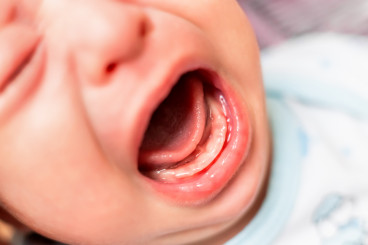Periodontal Disease
Periodontal disease, also known as gum disease, is a chronic inflammatory condition that affects the tissues surrounding and supporting the teeth. It is primarily caused by the accumulation of plaque, a sticky film of bacteria, on the teeth and gums. If left untreated, periodontal disease can lead to gum recession, tooth mobility, and ultimately tooth loss. The disease exists in two main forms: gingivitis and periodontitis.
Types of Periodontal Disease
Gingivitis: This is the earliest stage of periodontal disease, characterized by inflammation of the gums. Symptoms may include redness, swelling, and bleeding during brushing or flossing. Gingivitis is often reversible with good oral hygiene practices.
Periodontitis: If gingivitis is not treated, it can progress to periodontitis. This more severe form involves the destruction of the supporting structures of the teeth, including bone. Periodontitis can lead to deeper pockets between the teeth and gums, further inflammation, and more significant tissue loss. Various forms of periodontitis exist, such as aggressive periodontitis, which occurs in younger individuals, and chronic periodontitis, commonly seen in adults.
Causes
The primary cause of periodontal disease is poor oral hygiene, which allows plaque to form on the teeth and harden into tartar. Other contributing factors include:
Genetic predisposition: Some individuals may be more susceptible to periodontal disease due to genetic factors.
Smoking and tobacco use: These habits can impair gum health and reduce blood flow to the gums, hampering healing.
Hormonal changes: Life stages such as puberty, menstruation, pregnancy, and menopause can affect gum sensitivity and health.
Certain medical conditions: Diseases like diabetes, cancer, and autoimmune disorders can increase the risk of developing periodontal disease.
Medications: Some medications can reduce saliva flow, which is crucial for maintaining oral health.
Symptoms
Recognizing the symptoms of periodontal disease is essential for early intervention. Common signs include:
- Swollen, red, or tender gums
- Bleeding gums, especially during brushing or flossing
- Persistent bad breath
- Receding gums, making teeth appear longer
- Loose or shifting teeth
- Changes in bite or fit of dentures
Diagnosis & Treatment
Diagnosis typically involves a thorough dental examination, including:
Clinical Evaluation: Dentists will examine the gums for signs of inflammation, pocket depth, and overall oral hygiene status.
X-rays: Radiographs may be used to assess the bone levels around the teeth, helping to identify any bone loss.
Treatment for periodontal disease aims to restore gum health and prevent further damage. Options may include:
Professional Cleaning: Scaling and root planing are common procedures that involve removing plaque and tartar from above and below the gum line.
Antibiotics: These may be prescribed to help control bacterial infection and reduce inflammation.
Surgery: In advanced cases, surgical procedures such as flap surgery or bone grafting may be necessary to restore supportive tissues.
How to prevent Periodontal Disease
Preventing periodontal disease focuses on maintaining optimal oral hygiene practices, which include:
Regular Brushing and Flossing: Brushing at least twice a day and flossing daily can effectively remove plaque.
Routine Dental Visits: Professional cleanings and check-ups every six months can help catch early signs of gum disease.
Healthy Lifestyle Choices: Avoiding tobacco, managing stress, and maintaining a balanced diet can contribute to overall gum health.
Conclusion
Periodontal disease is a prevalent condition that can have significant implications for oral and overall health. Understanding its causes, symptoms, and treatment options is crucial for effective management and prevention. Early intervention and consistent oral hygiene can help individuals maintain healthy gums and prevent the progression of this disease.
Explore affordable dental treatments on Dr. BestPrice, your trusted dental auction platform.



